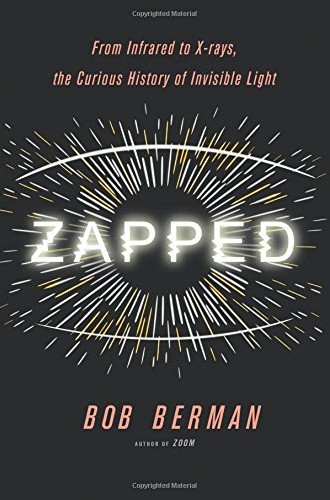It wasn’t the chapter on total solar eclipses that convinced me to read this book, nor was it the book’s claim to tell the story of “all the light we cannot see” (a claim that is at once audacious and subliminally heart-tugging for those who have read the novel of that name). It was the wry humor in the first sentence: “If God really did say, ‘Let there be light,’ it was no small housewarming present.” The author, astronomer Bob Berman, continues: “There is a lot of light in the universe—one billion photons of light for every subatomic particle. . . . The universe is literally made of light. And that includes not only ordinary everyday visible light but also the vast majority of light—the kind we cannot see. Light is an astonishing entity.”
Until reading that paragraph, I hadn’t considered God’s creation of light in such an expansive way. I’d always imagined that the instant that God spoke into the darkness, all the colors of the rainbow emerged. But according to Berman’s reconstruction of the scene, so did ultraviolet light and infrared radiation, radio waves and microwaves, x-rays and gamma rays. (This still doesn’t clear up the mystery of how there could be light on the first day of creation when the sun, moon, and stars weren’t created until the fourth day. Thankfully, neither Berman nor I is a biblical literalist, so we can leave such questions behind.)
The most delightful aspect of this book is the contagious sense of awe that the author conveys. Berman is pure scientist, an astronomy nerd in the most endearing sense of nerdiness. His focus is on the stories of how some remarkable scientists unfolded the mysteries of various forms of invisible light and how that light influences our lives and our health today. But he’s not afraid to marvel at the gravitas of his subject matter. Writing about cosmic microwave background radiation, a faint microwave hum that seems to be leftover from a cosmic “big bang” 13.8 billion years ago, Berman concludes:





